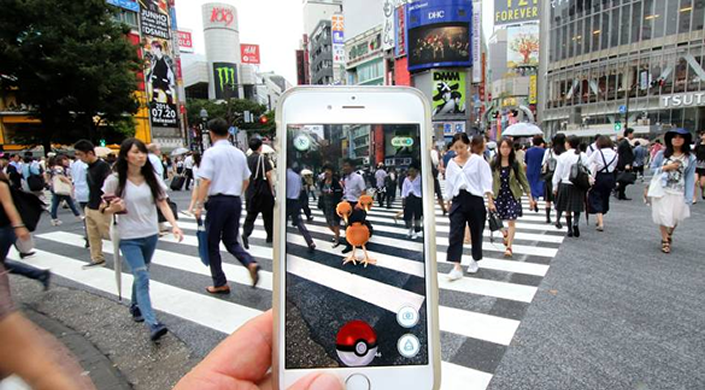What’s the difference between User Experience and Experience Design?
UX, XD, IXD, VD, GD, CD, PD, RD, VTA… the list goes on. It’s not an uncommon question, especially when the Design industry has evolved so quickly over time. We are seeing disciplines spanning across others as consumers and users may, or may not be, the purchasers, and brand loyalty becomes increasingly more important as products and services fill the shelves, and little furry yellow monsters move from the physical to the virtual reality world.
XD, or Experience Design is the design of a total experience of a product, service, and ultimately, of that brand. It begins the first time we are exposed to it — the first time we hear, see, feel, touch something that represents the brand. It continues as we experience the product, or service, as it succeeds and fails, and continues even past the end of it’s life.
Experience Design is therefore, made up of every single discipline of Design. From the visuals we see in their printed communications (Communications Design, or most commonly known as Graphic Design), such as posters, pamphlets, manuals, and quick start guides, and those we see when we use the product itself or when engaging with the digital platform (Visual Design, or VD) — the icons, colours, and graphics. It involves the interaction with the menus on the displays (Interaction Design, or IXD) and the usability with the physical product (Product Design, and Usability Design). In-store, it encompasses the design of the displays (Retail Design), and the design of scrims in an Expo or Trade Show (Exhibition Design). The Twitter, Instagram, Pinterest, and Snapchat accounts we follow fall under a Social Community Strategy, which is made up of various elements of the previous disciplines to round the total experience. Every element that brings a product or service to life falls under the umbrella of Experience Design.
Until at least a few years ago, Experience Design has been mistaken as UX, or User Experience Design. UX has traditionally been defined as the Interaction (IXD) and Visual Design (VD) of an app or stand-alone application. It looks at the “User” only and his/her experience. To enable an engaged total experience, we must understood how to design with the “User” and the “Consumer” as two very separate entities. Remember, the “Consumer” may not necessarily be the “User”.
So that’s all fine and all, but how do brands go about creating a unified, meaningful, and engaged Experience for their consumers and users? How do we ensure that every element of a brand, its services, and its varied product portfolio is strong enough to ensure brand loyalty over time? We will look at that in another article coming soon!
Revised: July 31, 2016
Leave a Comment
Leave a Reply
tlovertonet
March 16, 2025 You completed a number of fine points there. I did a search on the matter and found a good number of folks will have the same opinion with your blog. Your comment is awaiting moderation.





Melanie
March 25, 2025
The transformation of virtual gambling platforms: patterns and insights for 2025
The industry of virtual wagering is constantly advancing, with innovative portals http://staceym.webversatility.com/2025/03/12/n-yax-onlayn-kazinolar-azrbaycan-2025-n-yax-1061-174/ , functions, and prospects arising each year. As 2025 unfolds, gamers can look forward to an even more refined and immersive betting environment. From cutting-edge safety protocols to the expansion of promotional gaming sites, the sector is adapting to cater to the needs of a growing worldwide community.
Expanding Opportunities in Internet Wagering
The digital casino industry remains to grow, with new betting platforms featuring vast collections of reel games, card games, and live dealer sessions. Innovations in technology have enabled effortless gameplay, with high-quality imagery, captivating animations, and dynamic elements that rival brick-and-mortar establishments. Many gaming hubs now provide countless demo versions together with monetary options, allowing bettors to explore and improve their techniques before wagering real stakes.
The Popularity of Prize-Based Gambling Platforms
One of the major developments in 2025 is the increasing acceptance of promo-based betting platforms. These platforms permit users to engage in casino activities with digital tokens that can frequently be redeemed for actual money. Differing from regular betting platforms https://mihajloderimanovic.com/azrbaycanda-n-yax-onlayn-kazinolar-2025-325/ , prize-based sites operate under distinct regulatory structures, making them open to gamers in regions with more rigid regulations. With dozens of choices to choose from, these websites have grown into a popular alternative for those looking for entertainment without personal money investment.
Incentives and Rewards: Boosting Player Value
To draw in and retain users, gambling platforms strive to provide lucrative promotions, including sign-up rewards, deposit matches, and free spins. Some platforms offer risk-free incentives, allowing beginners to test the gaming site without financial commitment. VIP programs and loyalty programs also serve as a crucial element in maintaining long-term users active, with refund bonuses and premium gifts designed to high-stakes players.
The Significance of Trust and Security
As virtual gaming platforms develops, so does the necessity for reliable platforms. Well-established operators prioritize user protection by integrating cutting-edge security protocols, secure payment systems, and self-regulation tools. A growing number of platforms are currently leveraging machine-learning security measures to prevent unfair practices and guarantee game integrity. Additionally, helpdesk solutions have significantly advanced, with round-the-clock support and language-adaptive help centers now a common feature.
Optimized Mobile Gameplay for Modern Users
With most players engaging in betting experiences via mobile devices, optimized gameplay has become a necessity. Nearly all platforms currently support fully optimized interfaces, guaranteeing hassle-free user experience across various devices. Some operators have even launched mobile casino software, enhancing gameplay quality with faster loading speeds and special smartphone deals.
The Future of Online Casinos: What Lies Ahead?
As digital advancements progressively influences the gambling industry, new developments such as immersive VR casinos and blockchain-based gaming are rising in popularity. VR casinos http://dona.zizzi.org/2025/03/12/n-yax-onlayn-kazinolar-azrbaycan-2025-n-yax-1061-175/ provide immersive simulations, simulating real-world casino settings, while cryptographic technology boosts transparency in betting transactions. Additionally, regulatory advancements are expected to generate expanded access for licensed digital casinos worldwide.
As we move deeper into 2025, virtual gaming hubs continues to be ever-evolving, delivering players countless options to enjoy thrilling games, compelling promotions, and groundbreaking features. Whether through wager-based websites or skill-based gaming options, online betting’s next phase promises endless excitement.
Your comment is awaiting moderation.